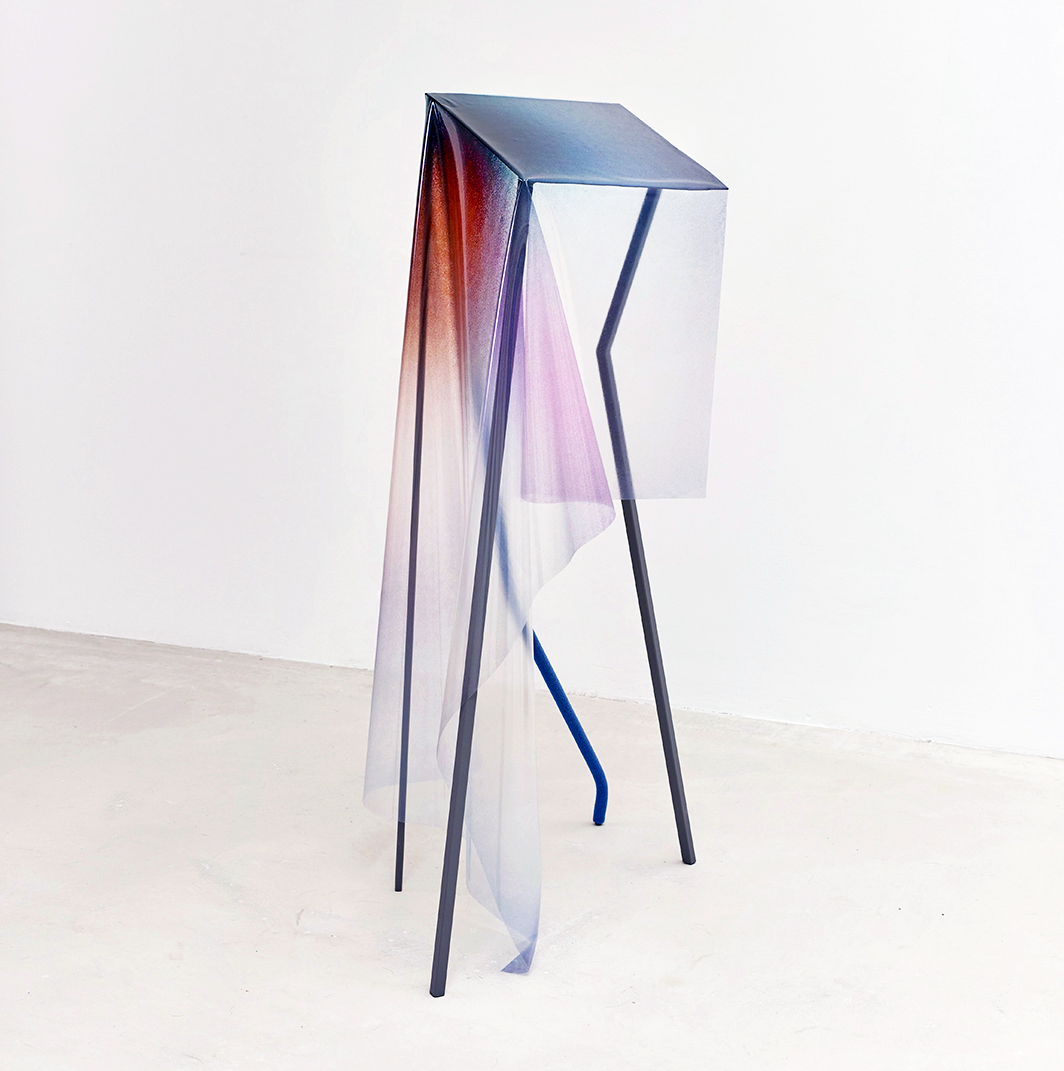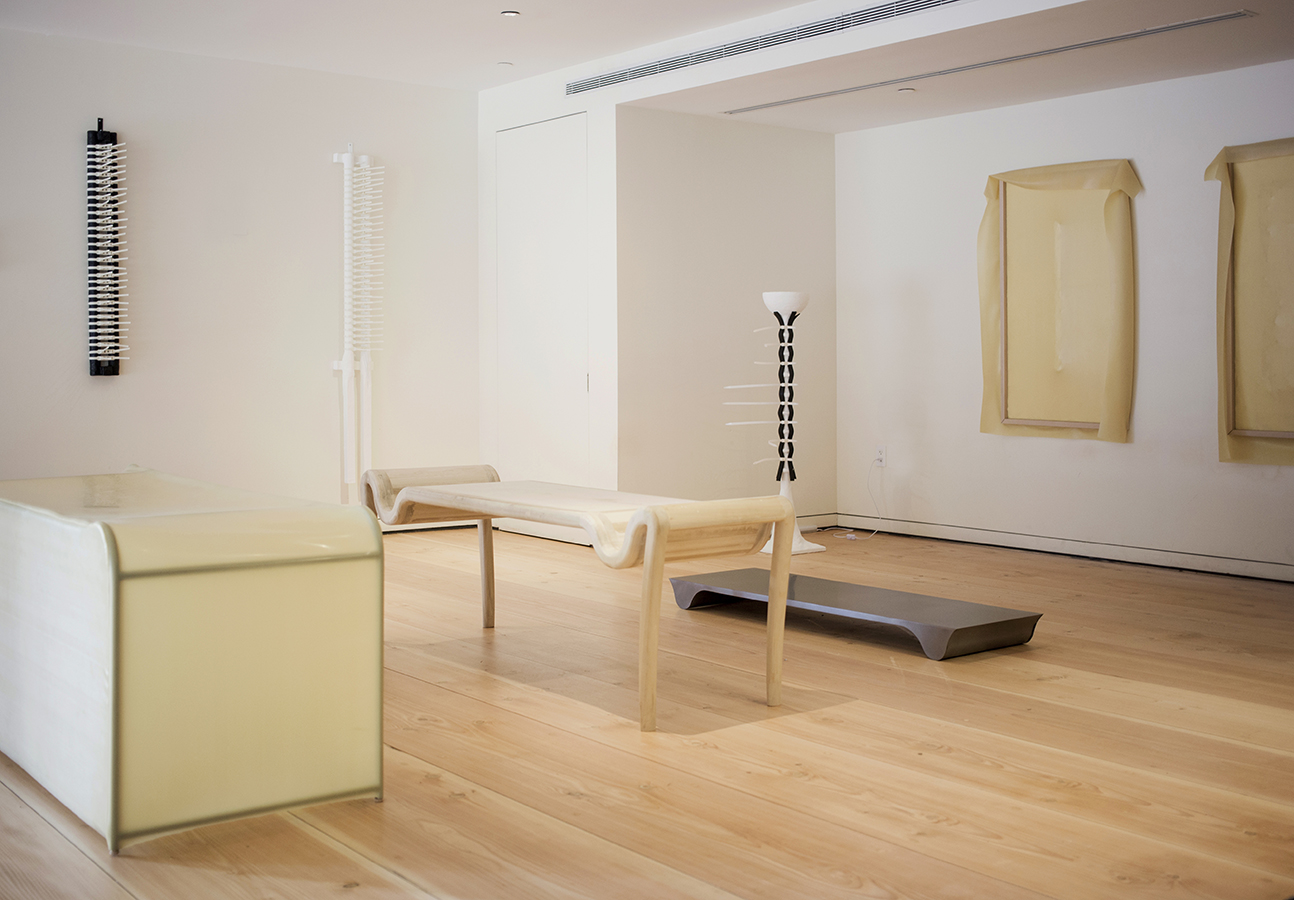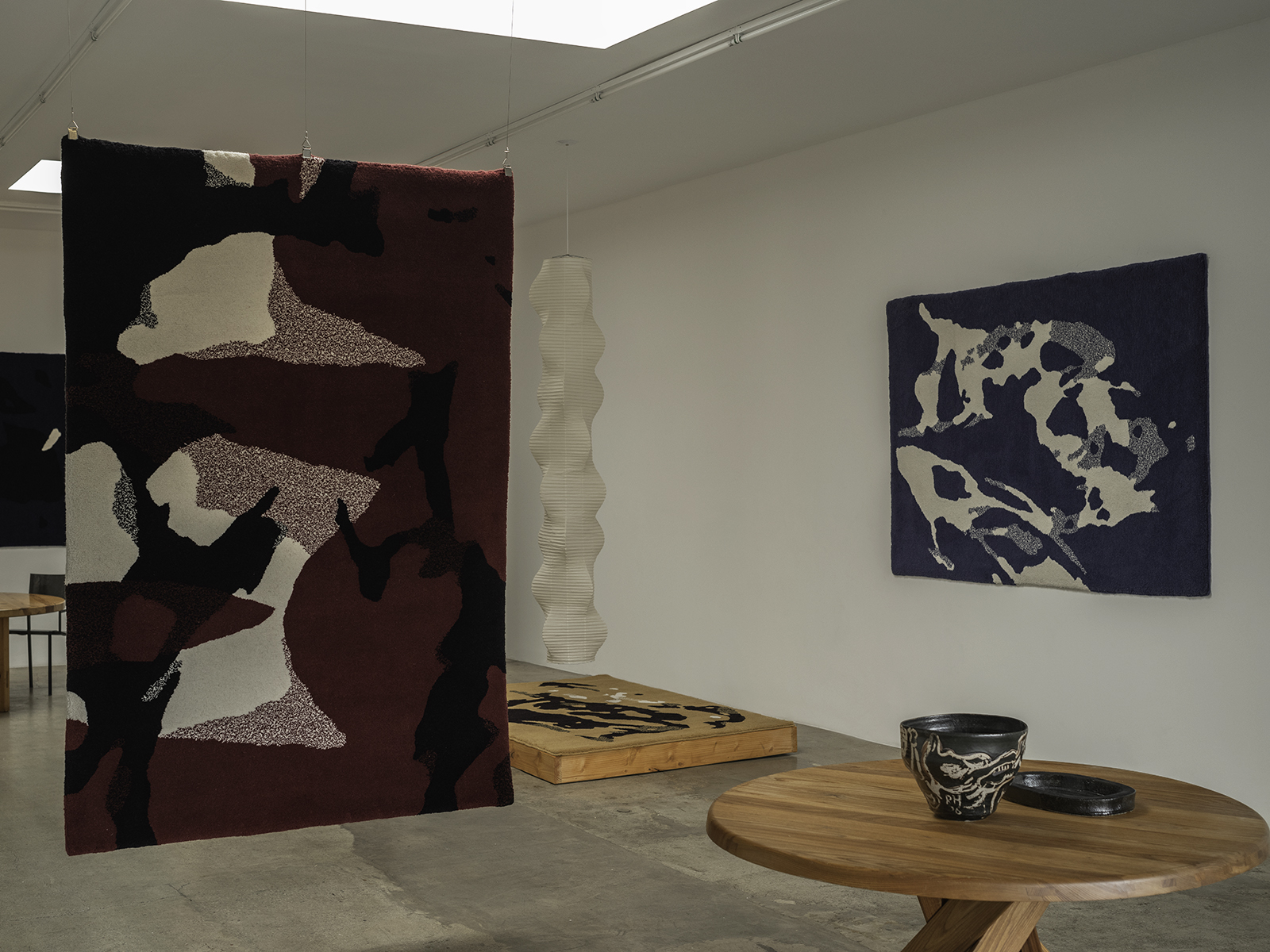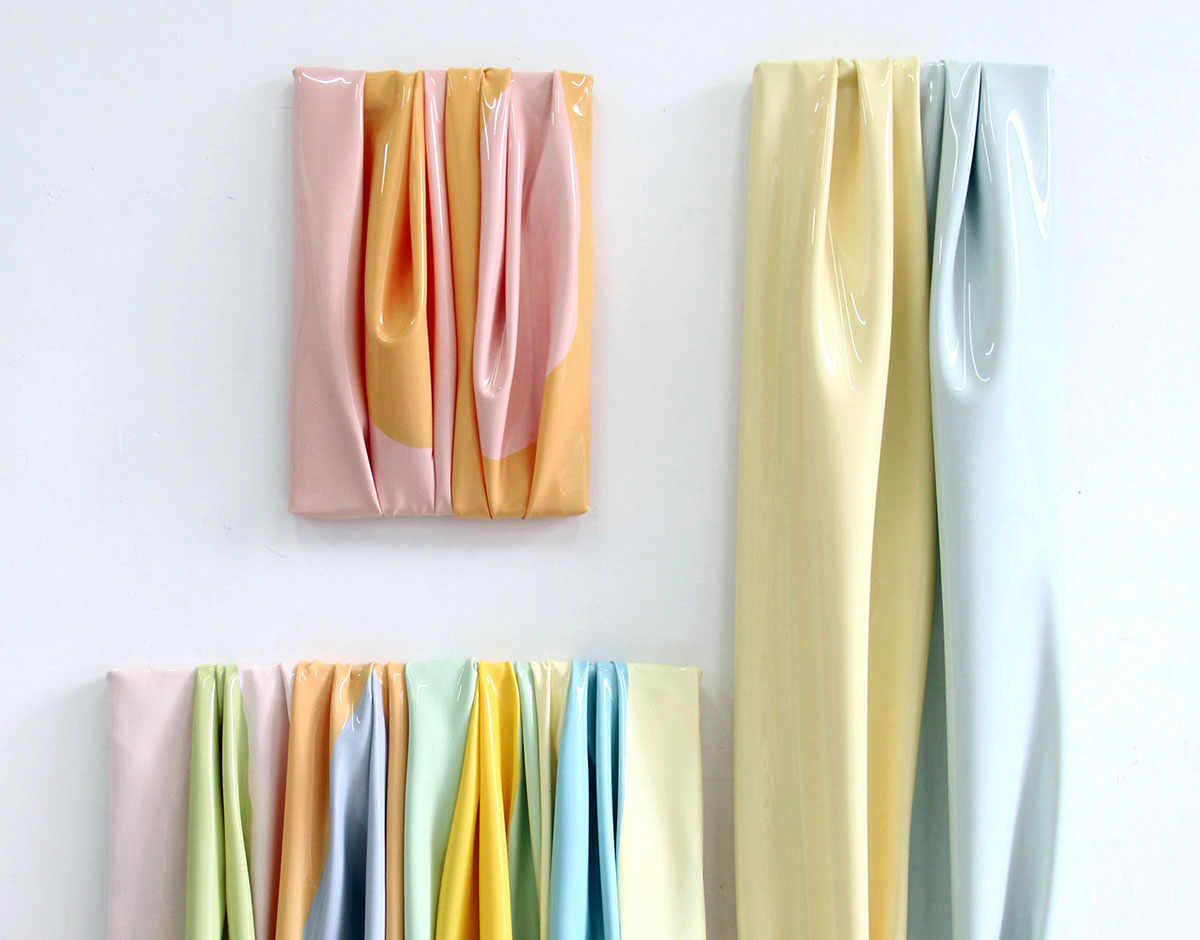
04.06.22
Up and Coming
Introducing Manon Steyaert, the French Artist Making Plastics Look Pretty
By now, you might be aware that latex is having a bit of a moment in the fashion world. But have you ever seen sheets of the stuff applied to — or, more specifically, becoming — the canvas? We hadn’t, or at least we hadn’t seen instances where it was not only used but was in fact the main event, which is precisely why we found the work of Paris-born, UK-based artist Manon Steyaert so interesting. Granted, Steyaert uses silicone sheets rather than latex, but the effect is similar (and she initially experimented with latex, hence the similarities). To produce her pleated plastic works, Steyaert creates color fields within single silicone sheets, cures them, and then drapes them onto a handmade frame like fabric. The result lies somewhere between a Fauve movement painting and fetish gear, an aesthetic we can get behind — no pun intended. We spoke to the artist about her creative background, her process, and how she started working with silicone.
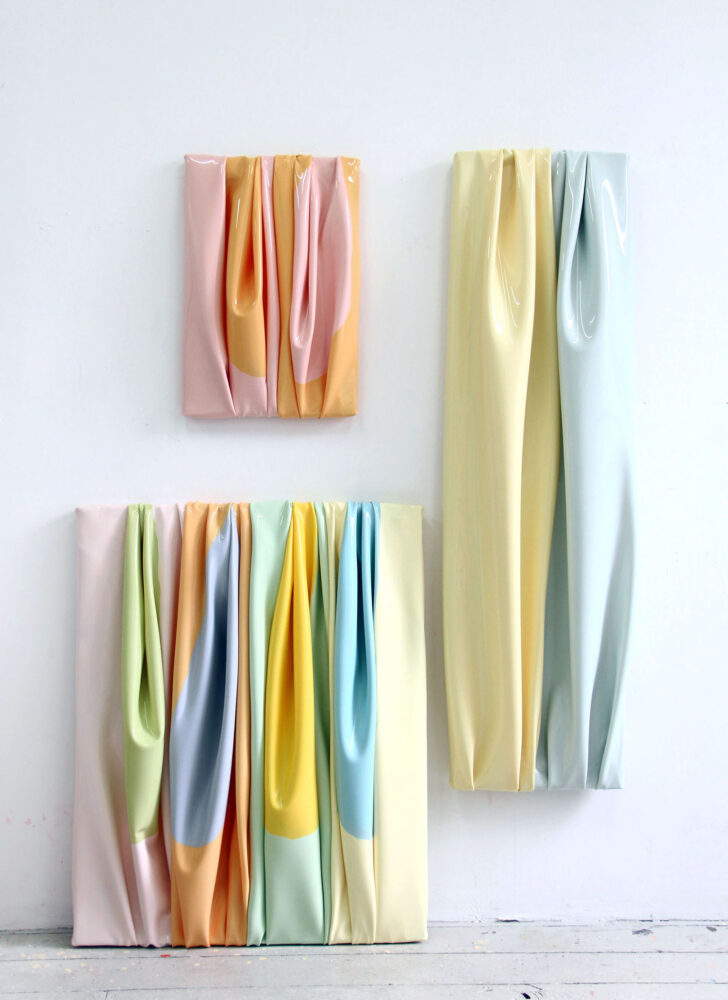
![]()
![]()
We only recently discovered your work through The Ode To, and I noticed that you’ve only been practicing for a few years. Can you take us a bit through your creative trajectory? How did you end up where you are now?
I think my creativity started by going to museums in Paris with my grandparents. I was lucky to be exposed to art at a young age, and even though it was a bit tiring going around to museums, it started a curiosity as to how artworks were hung and also planted the seed of not liking the flat plain of painting. That craving for something three-dimensional pushed me into fashion. I liked how a garment could be structural and stand on its own on the body; seeing flat patterns being put together to create a 3D garment was fascinating to me. I tried to get into the fashion program at Central Saint Martins in London but was not accepted, so I went into Fine Art instead, as I had an art background from school. I did three years at Central Saint Martins and then a year at Chelsea College of Arts, also in London. Since the end of 2019, I have been a practicing artist and am currently based in my studio in South Bermondsey, London.
I am still very much at the start of my career but wouldn’t be where I am without the power of Instagram and the Artist Support Pledge that started at the beginning of Covid. This allowed me to start small and gain exposure that organically grew with hard work.
You work with silicone sheets, a somewhat obscure material. How did you first begin working with it?
The idea originally began in my Masters year at Chelsea College of Arts. I was looking into separating layers of colors as I was no longer interested in painting them on a flat canvas, nor was I very good at or patient enough to do it, especially when using oil paint. I began to look at materials that I could wrap around a canvas or cover to create an eye-catching surface. I tried iridescent cellophane, but I have never found ready-made materials interesting enough. I don’t see my input when using them. So I explored liquid latex as I knew it could be manipulated in terms of color and flexibility to wrap around the canvas. This material worked for a while until I realized its lack of longevity and that it would degrade with UV rays. So I looked into other materials.
I still craved this shiny, eye-catching material, and after doing a lot of research, I tried mixing my own silicone to see whether it could be made into something besides just molds. The sheets are industrially made but not in such bright colors which pushed me to create my own. I like that I have taken a somewhat industrial process and made it into a more playful, delicate looking material.
![]()
![]()
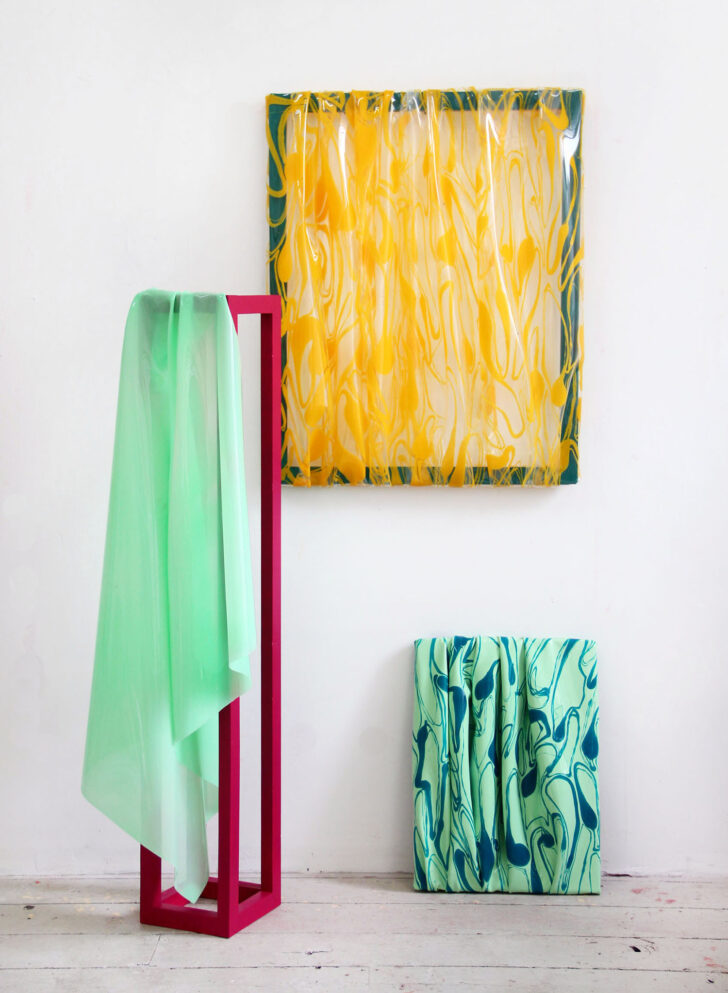
Where do you find inspiration for your compositions? Your palettes?
My inspiration for color really comes from everywhere — for example, walking along the canals during lockdown in London influenced the whole palette and theme for my first international solo show with Annika Nuttall Gallery in Denmark at the start of 2021. I get a lot of my inspiration from old works and just testing out different combos. I also have been trying to be more present in my environment and pay attention to things that catch my eye. During my residency at PADA studio in Portugal in the summer of 2020, the environment was so different to London that I was constantly attracted to everything, taking in all the colors when walking, appreciating what my gaze was drawn to. If something catches my eye, I want to pass it onto the viewer — that sense of realization about what’s in front of your eyes.
Take us through your process of creating one of your pieces.
I normally start with either watercolors or gouache, throwing some color that I currently like or that resonates with me down onto the paper, playing around with combos. I then draw a very quick line drawing. I map out what the piece may look like, still remaining very abstract. I like to highlight the folds of the piece. This beginning process reminds me a lot of when I used to draw out garments when I was younger. I then make the canvas frame from scratch. This is a step I used to ignore, but I like knowing that my hand was very present in making the work, as it sometimes isn’t very obvious in the final piece.
Then I mix my silicone and color it myself. This is a process that can be quite difficult as I mix the colors myself with a very limited range of pigments. When I first started it was like going back to square one, as I was trying to figure out how to make so many different tones with a minimal range. It was something of a humbling moment and an appreciation of the power of color.
I then pour the silicone onto Perspex sheets and spread them to the size I desire for the frame. Once dried, I attach them to the canvas frame. This process can either take five minutes or a good two hours. I sometimes let the silicone do its own thing in the folds and when I try to control it to create a certain sumptuousness it can be very difficult. It feels like I’m dressing the frame and it’s fighting back. This can happen due to the thickness of the silicone or purely that the sheet isn’t big enough. Overall it is a process that has taken me a long time to understand and perfect. I still love that I can be surprised by it.
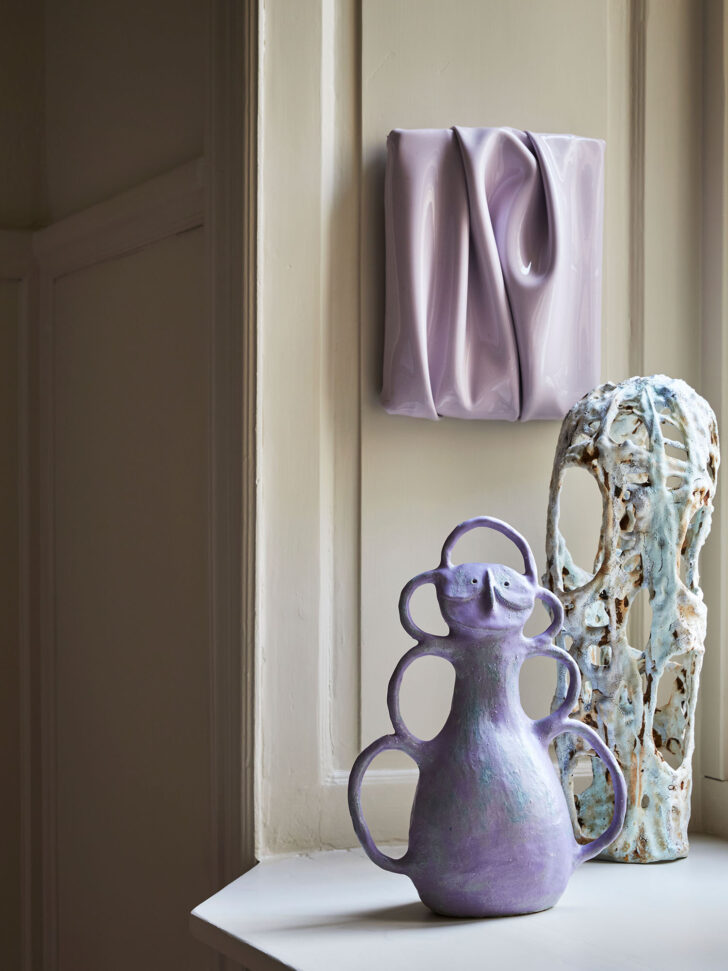
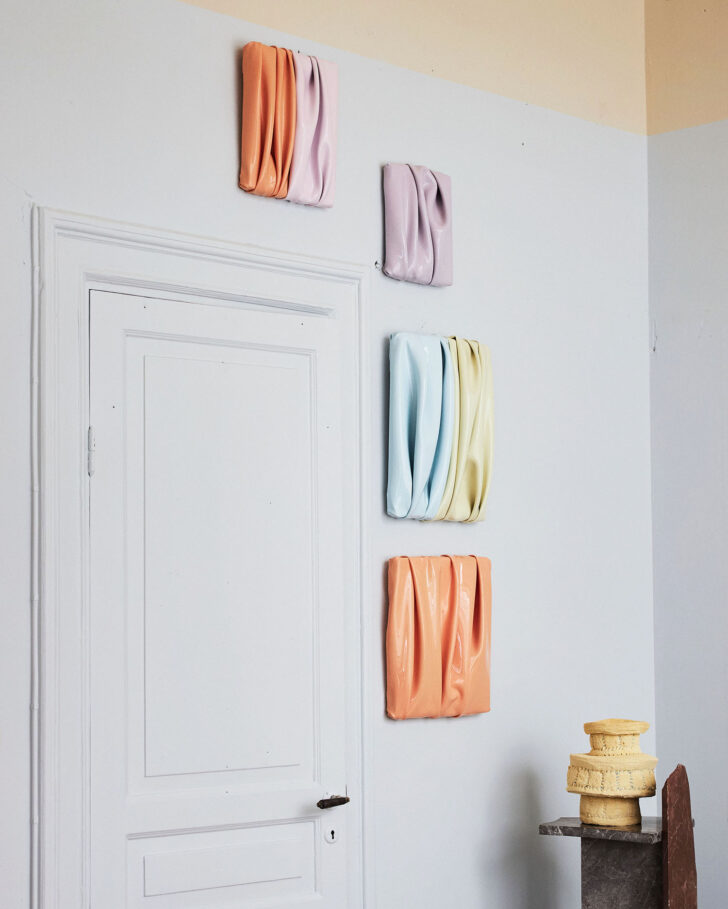
![]()
What do research and experimentation look like for you?
Experimentation to me is learning from mistakes and manipulating my materials in ways that I haven’t yet explored. For example I recently created silicone “tiles.” These were experimental pieces as I hadn’t made anything like them in the past. They were in response to my preliminary drawings for larger works where I noticed a pattern emerging which represented the folds in the work. This pattern was something that caught my eye and I wanted to explore it in a 3D manner, influencing me to look into mold-making. Experimenting is also going back and forth with planning, as the materials I use aren’t cheap. There has to be some form of planning. I think it also comes from researching, expanding my mind with a topic I haven’t yet realized is connected to my work; for example, I’m currently diving into the language of drapery, a topic based on Old Master paintings and the extension of imagination in regards to painting the fabric.
What’s next for you?
I’m looking to expand the range of materials that I use and experiment with aluminum, painted in bright shiny colors, manipulating the metal by hand to create both wall and floor based sculptures. I am also looking into some of my works being able to live outside as I’m curious how natural light will react with them. They will be cut outs of sorts that will fall in and out of the viewers eye line, highlighted by the sun on a sunny day.
I am also looking to push exhibitions as I believe this is what gets me to question my works and how I want to present them to a viewer, allowing me to experiment a bit more. I have a few shows planned, one in London in September this year, possibly showing some work in Copenhagen at the art fair and super excited to have work with Salon Design for New York Design Week in May this year.
![]()
![]()
![]()
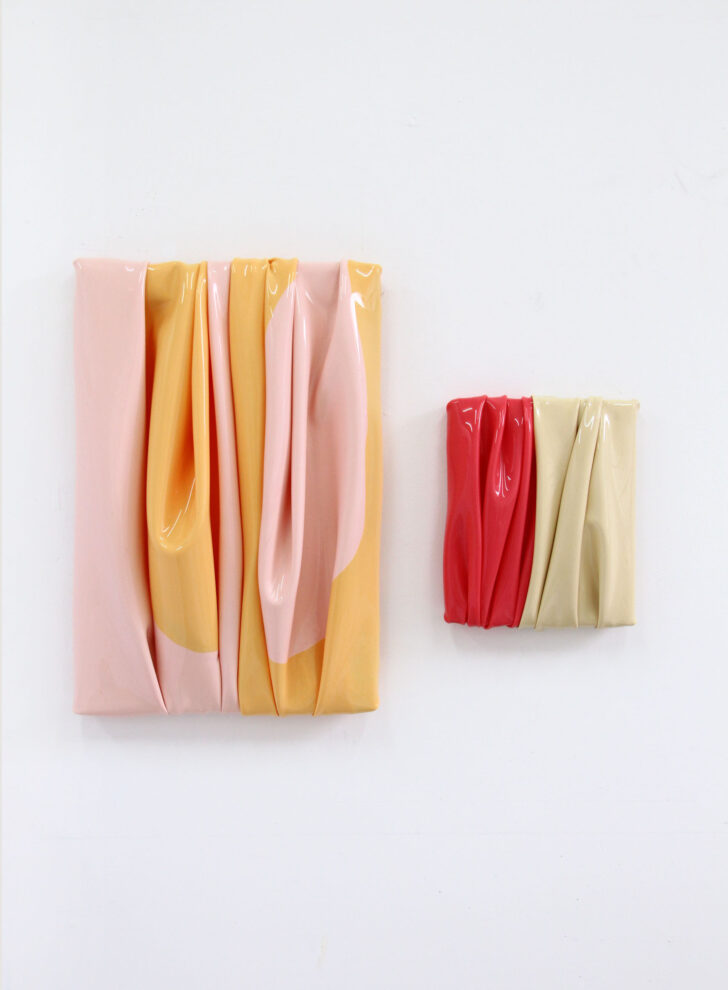
![]()
![]()
![]()
![]()
![]()
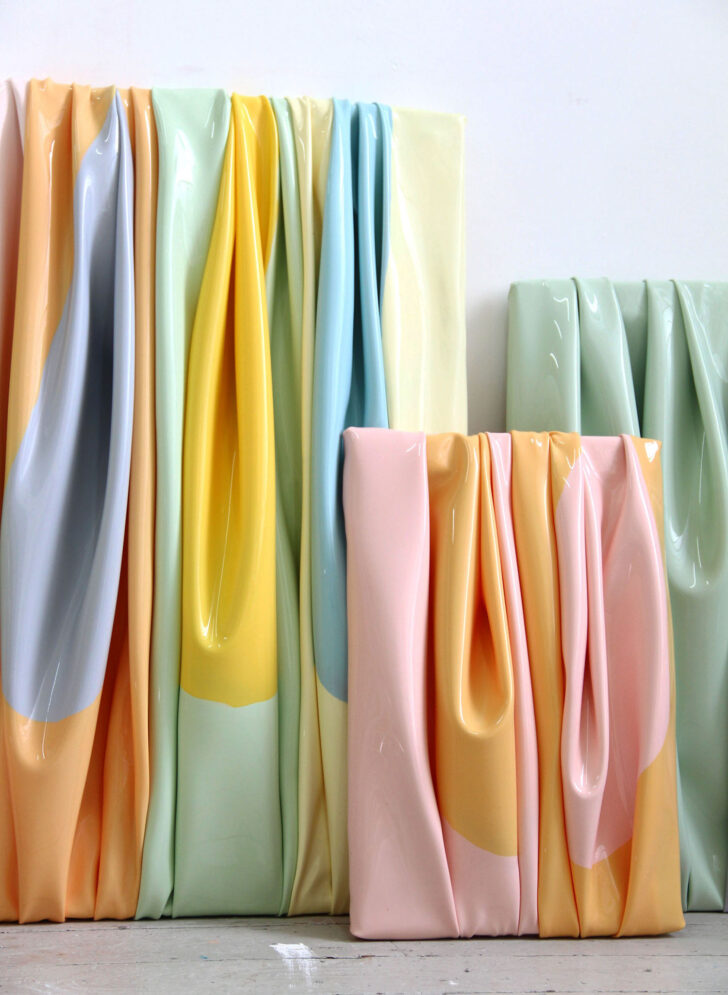
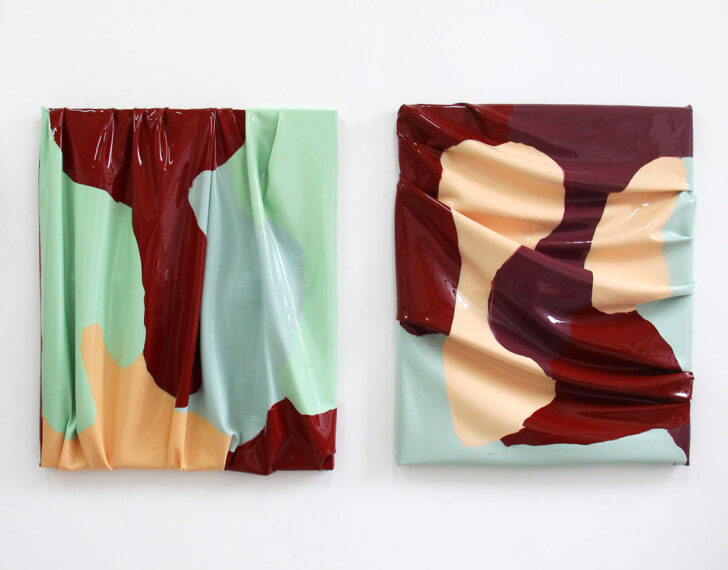
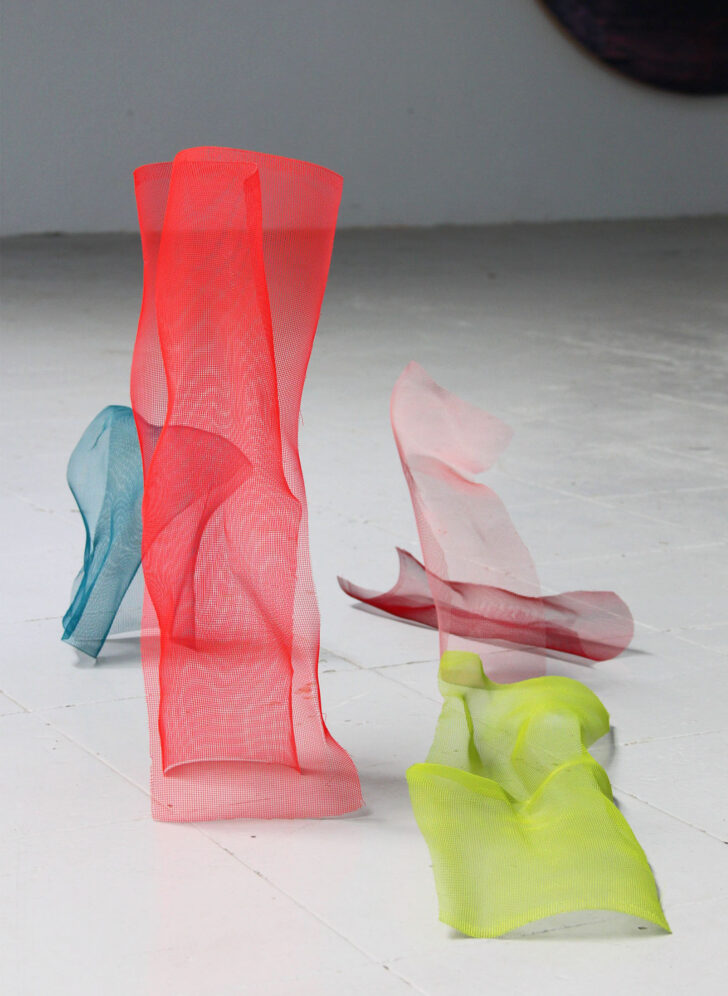
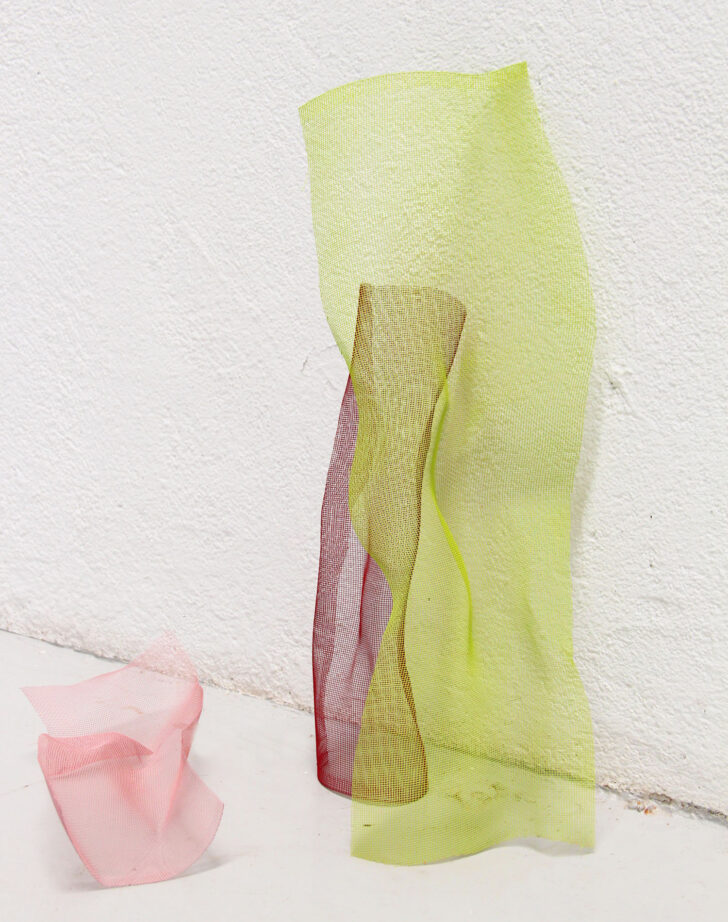
![]()
